I. What is the Chromosomes Role in Genetics?
Images of baby showers and the respective symbols for male and female sex may come to mind when talking about chromosomes roles in genetics. But their role goes much further than determining your sex, ultimately contributing to the unique traits that make you who you are!
There’s so much more to chromosomes other than the fact that you get one of each parent! The study of chromosomes in genetics has not only allowed for the growth in the study of genetics, but also how we can utilize this study to treat genetic diseases.
Understanding the chromosomes’ role in genetics underlies the foundation for many other related high yield MCAT topics, from mendelian genetics, punnett squares, autosomal and sex-linked diseases, etc. Always been on the lookout for how these topics relate/overlap!
II. Chromosome Fundamentals in Genetics
We’ve covered chromosome structure in a previous article; however, in order to understand the chromosomes’ role in genetics, let’s expand on chromosomal structure a little bit more!
A. Expansion of Chromosomal Structure
While we’ve discussed chromatin and histone proteins, three more terms to become familiar with in regards to chromosomes are: 1) gene, 2) locus, and 3) allele.
I. Gene
Though having many different meanings, a simple definition of a gene from a molecular biology level is a sequence of nucleotides in DNA which codes for a protein or a RNA molecule.
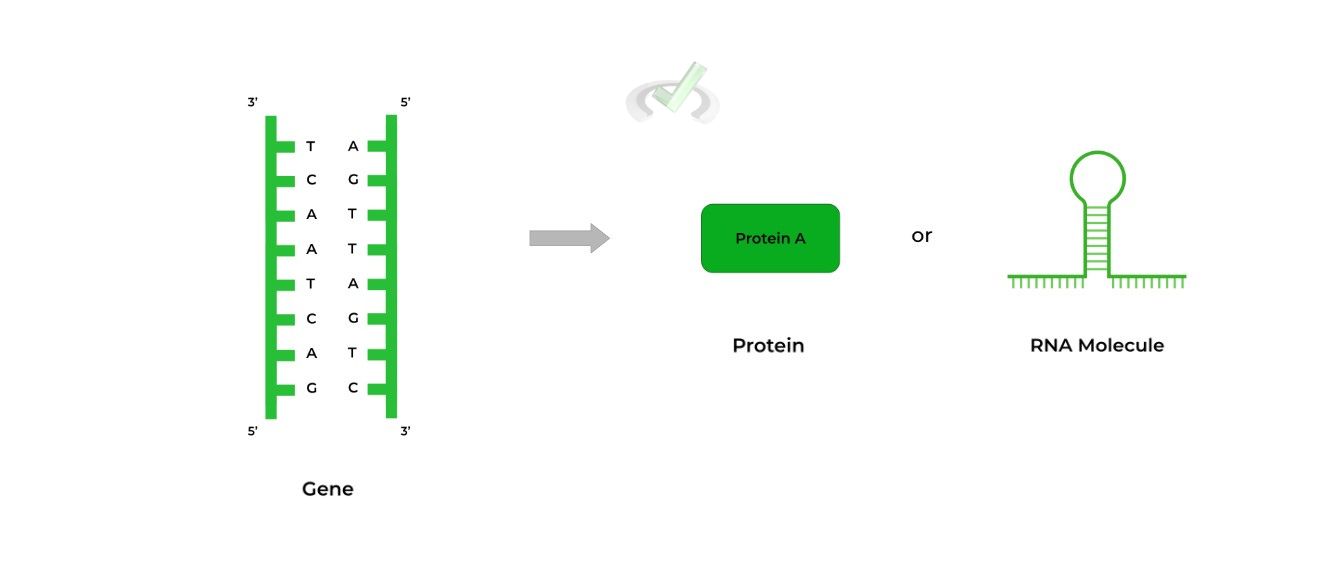
II. Locus
In its simplest meaning, the locus simply refers to the position a certain gene is on a chromosome. An easy mnemonic/trick you can use is to think of the LOCus as a LOCation of a gene!
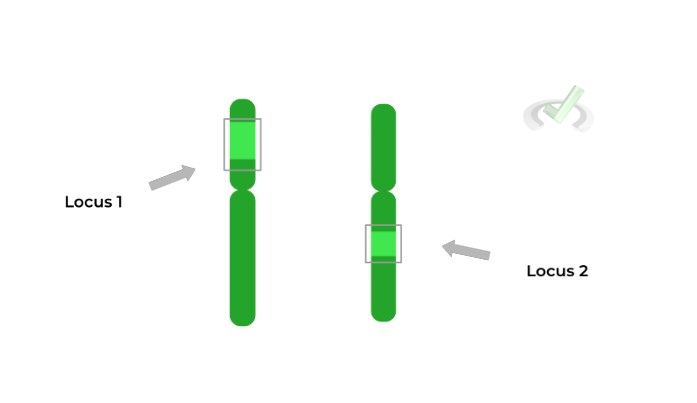
III. Allele: Single and Multiple
Because you have 2 copies of each gene (more on that later!), you can have different “versions” or “variants”, of those genes termed alleles, just like you can have different versions of pasta or guitar styles!
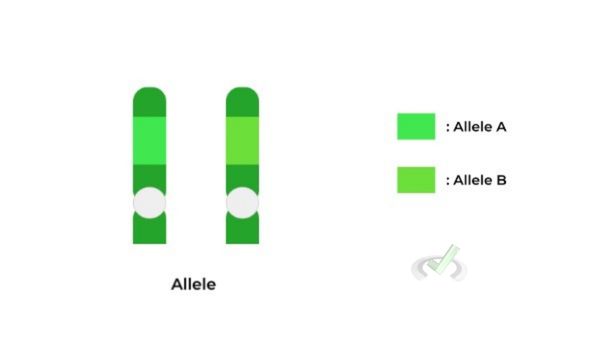
Notice how the alleles are on the same locus, but just on different chromosomes! This shows that the alleles represent the same gene (i.e. eye color), but are DIFFERENT versions of that gene! (i.e. allele A for brown, allele B for blue).
Consider the following diagram below to keep track of all the different terms and how they relate to the chromosome’s role in genetics!
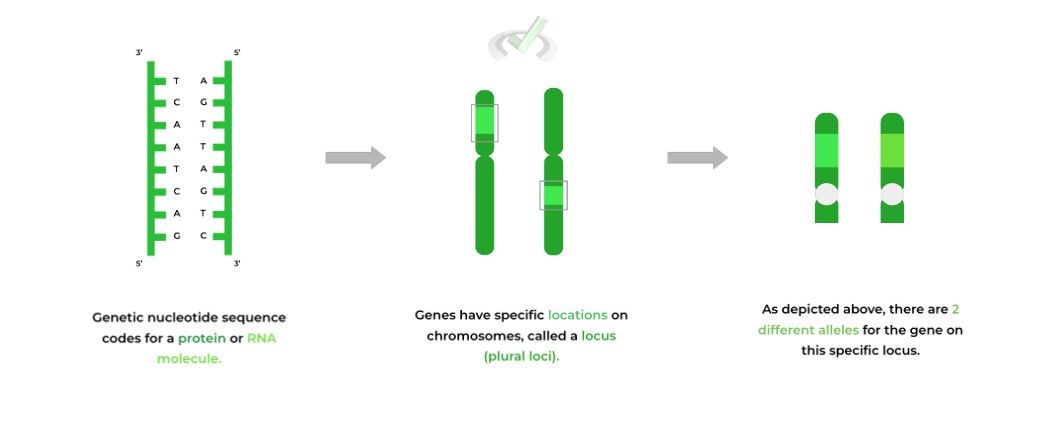
B. Homologous Chromosomes
Aside from being a hell to pronounce, homologous chromosomes explain why we have 2 gene copies and how alleles are involved in genetics!
Recall that we have 23 pairs of chromosomes (in total, 46 individual chromosomes): 22 pairs of autosomal (non-sex) chromosomes and 1 pair of sex chromosomes.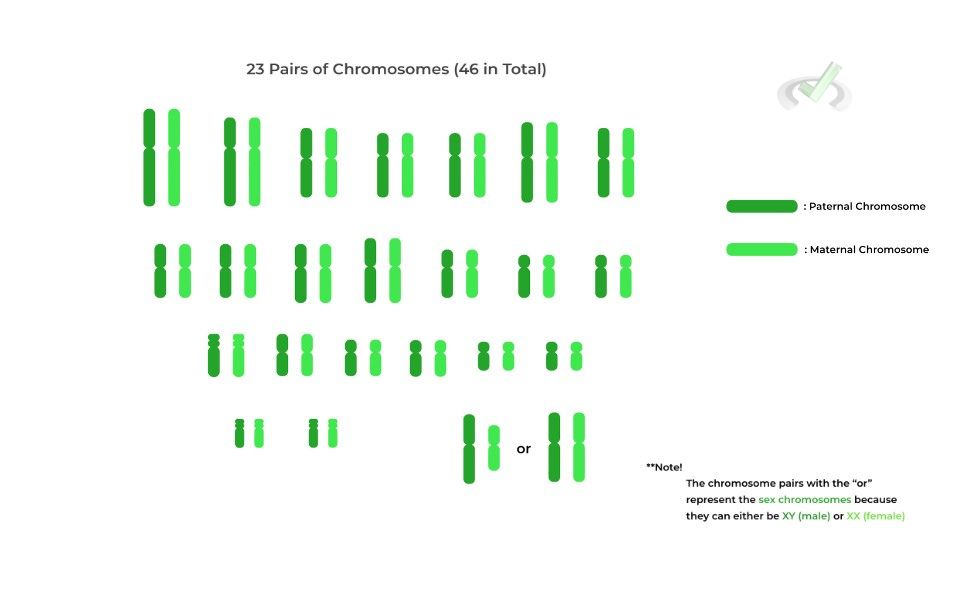
These chromosomes are termed “homologous” because the chromosome pairs contain the same genes, also on the same locus (i.e. location)!
I. Alleles: Homologous Chromosomes
Because of the homologous chromosomes, there are 2 copies of each gene: one from each parent. Likewise, there can be multiple versions of that gene, termed alleles! Take a look at the example below!
The gene located on the locus below codes for hair length (HL). In its simplest form, let’s say the gene only has 2 alleles: one that results in long hair (L) and one that results in short hair (S).
As shown by the diagram below,, there are 3 possible combinations of alleles for that specific. This is only in the case for 2 alleles (variants) of that gene: imagine if there were over 7 or 8 alleles present!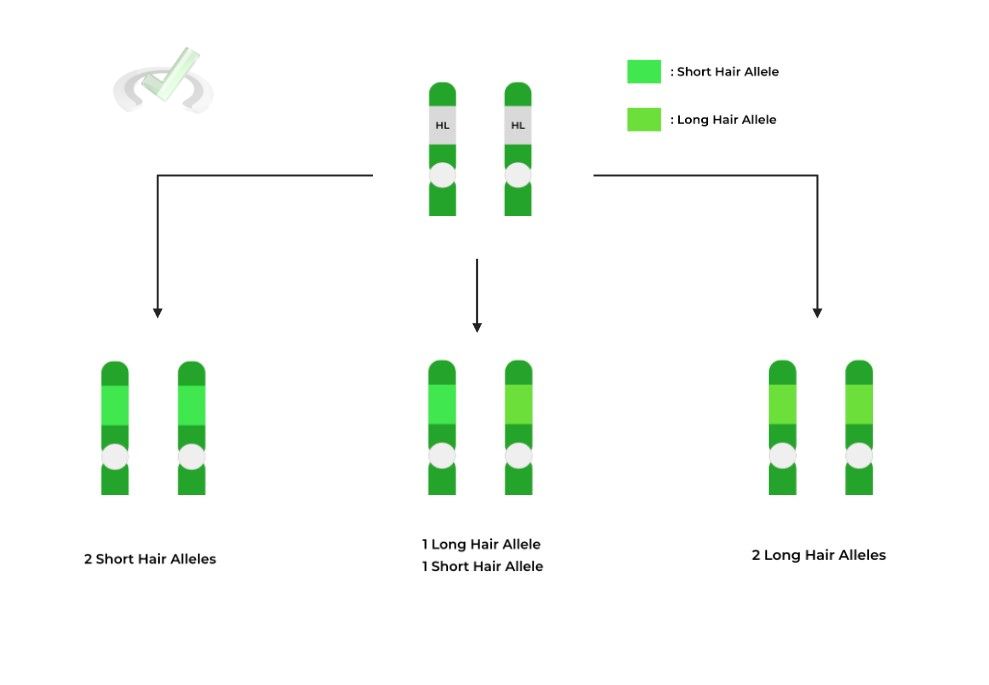
III. Bridge/Overlap
If you’ve taken a genetics class in your undergrad or even AP biology, you’ve likely come across punnett squares! Aside from being basically the molecular genetics version of sudoku and a series of 2x2, 4x4, 8x8 (etc.) boxes and squares, they are such a high yield MCAT topic!
I. Punnett Squares
We’ll go over punnett squares in much greater detail in another article, but wanted to mention them here due to how allele variants play such a crucial aspect in both setting up and solving them
You’ve probably seen punnett squares as shown below, showing a simplified example with blood type.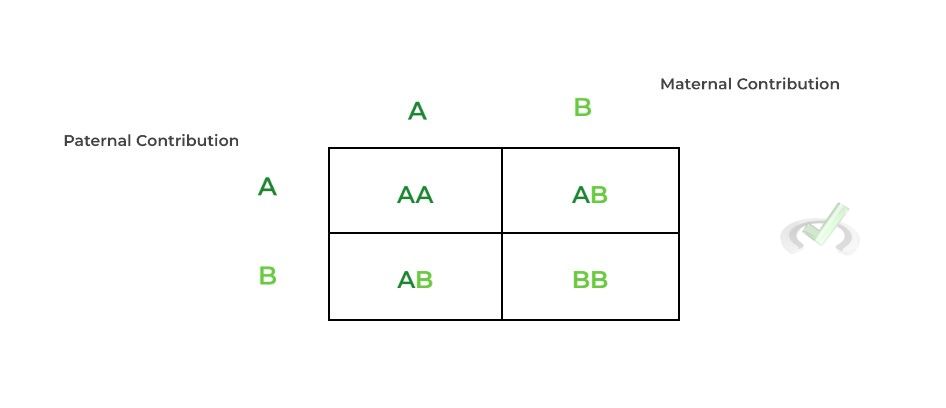
As shown, there are 2 alleles that are shown on the top and bottom: this is due to the 2 gene copies due to the homologous chromosome pairs.
You can think of the sides representing the paternal and maternal contribution to the punnett squares as indicated above! These also represent the genotypes of the parents, as well as the combinations within the boxes.
Again, we’ll cover this topic in more detail in another article, but as shown, the alleles help to set up the punnett squares.
IV. Wrap Up/Key Terms
Let’s take this time to wrap up & concisely summarize what we covered above in the article!
A. Expansion of Chromosome Structure
In addition to the basics of chromosome structure, three other important terms important in understanding chromosome’s role in genetics are: 1) gene, 2) locus, and 3) alleles.
I. Gene
This refers to the actual nucleotide sequence of DNA which codes for a protein or an RNA molecule.
II. Locus
This term refers to the specific location of a gene on the chromosome. An easy mnemonic/trick you can use is to think of the LOCus as a LOCation of a gene!
III. Allele
Sometimes, different “versions” or “ variants” of the same gene exist. These variants are referred to as alleles.
B. Homologous Chromosomes
We have 23 pairs of chromosomes (46 individuals in total): each pair consists of a maternal chromosome and a paternal chromosome.
They are called homologous because the chromosomes both have the same genes on the same loci (location). As stated before, these genes can have different versions, called alleles.I. Alleles: Homologous Chromosomes
Because we have homologous chromosomes, we have 2 copies of each gene which can give rise to multiple combinations of gene allelic variants. The understanding of these alleles and their role in genetics lies the foundation for punnett squares!
V. Practice
Take a look at these practice questions to see and solidify your understanding!
Sample Practice Question 1:
When an allelic combination of homologous chromosomes are the same variants (i.e. 2 blonde hair gene alleles), the allelic combination is termed as homozygous. How many of the allelic combinations are homozygous for a gene with only 2 allelic variants?
A. 0
B. 1
C. 2
D. 3
Ans. C
If there are only 2 allelic variants of a gene, then there are only three possible allelic combinations. Let’s use the letter A as allele 1 and the letter B as allele 2. The allelic combinations are as follows: AA, AB, and BB.
As shown, only the AA and BB allelic combinations are the only homozygous combinations.
Sample Practice Question 2:
Given a gene that codes for hair color and having the following alleles: black (Blk), brown (Brn), and blonde (Bld), give all the possible allelic combinations for an individual. (Assume 2 gene copies in individual due to homologous chromosomes)
Ans.
Blk, Blk
Brn, Brn
Bld, Bld
Blk, Brn
Blk, Bld
Brn, Bld



 To help you achieve your goal MCAT score, we take turns hosting these
To help you achieve your goal MCAT score, we take turns hosting these 
























